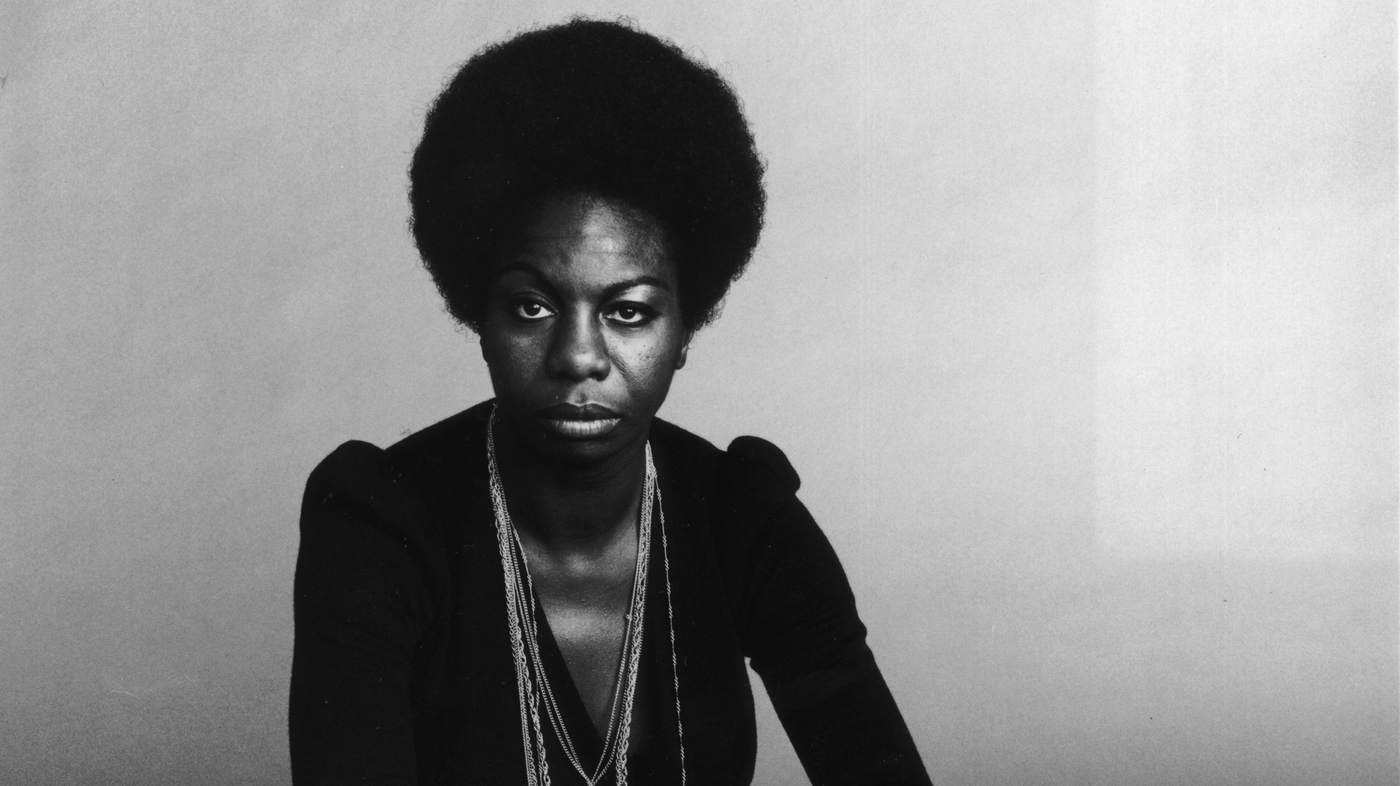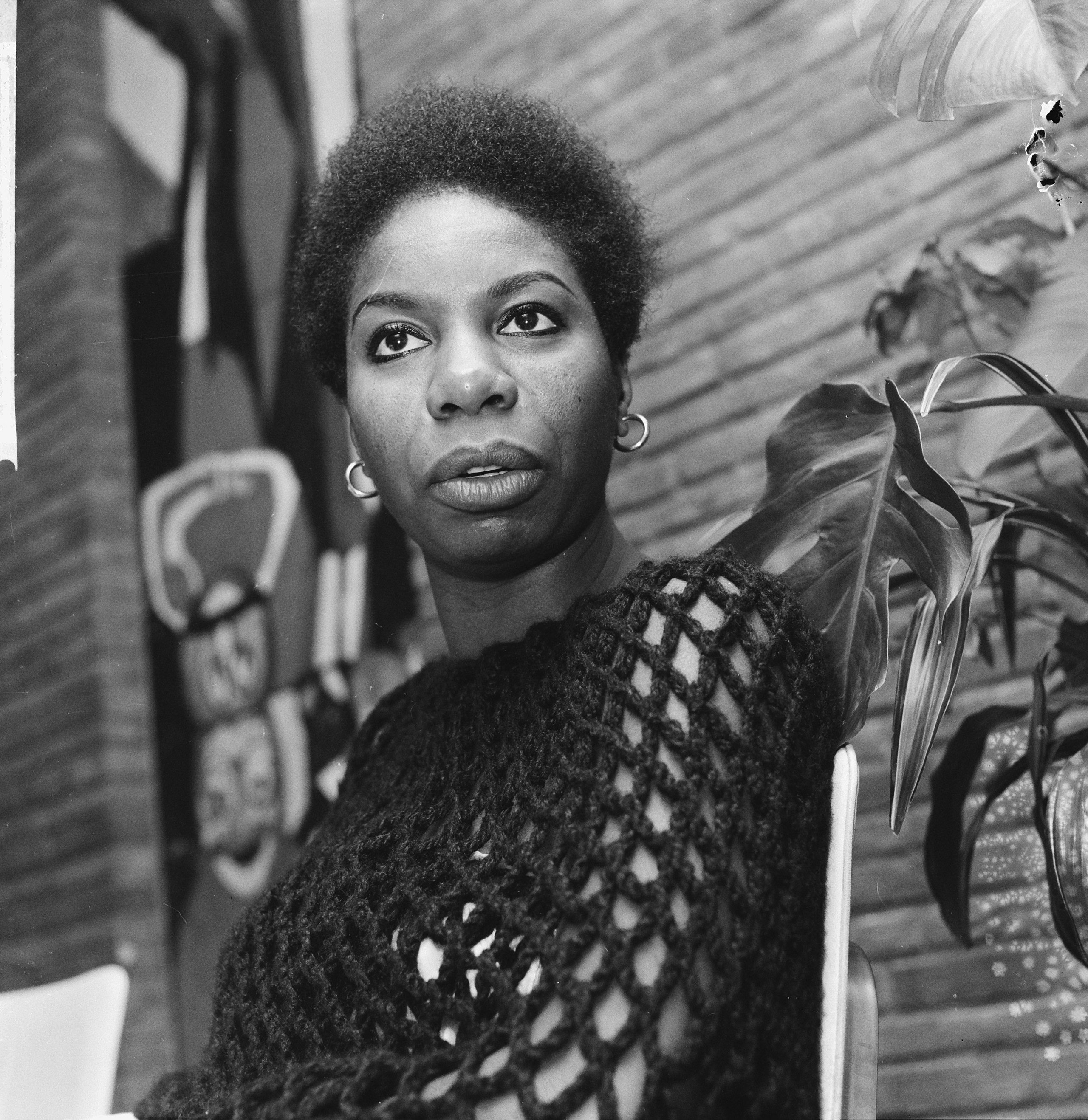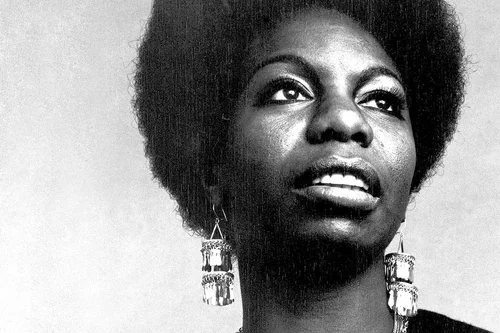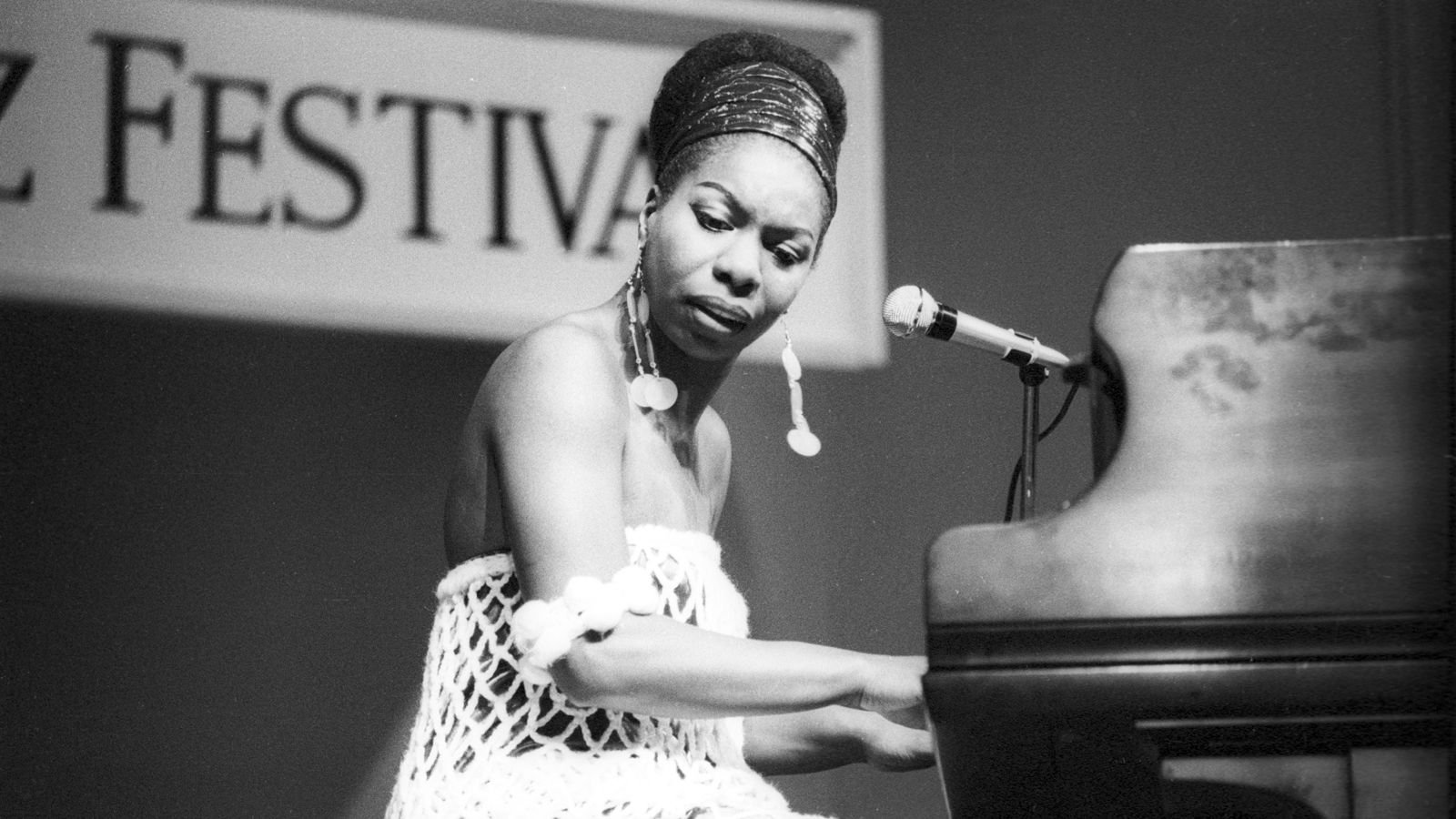Before the Fire: Little Girl, Big Piano
Tryon, North Carolina — where Eunice Waymon learned that talent isn’t always enough.
There are children who hum songs, and then there are children who seem to be born with an orchestra hiding somewhere inside them. Eunice Kathleen Waymon was one of the latter — a prodigy with a piano bench taller than her legs, raised in a one-room shack in the segregated South. Before she was Nina Simone, before the fame, before the fury, there was just a small Black girl in Tryon, North Carolina, trying to play Bach in a world that didn’t want to hear her.
The story sounds mythic now — a little girl sitting at her mother’s church organ, fingers too small to span the octaves but precise enough to echo divinity. The congregation would weep; not out of sentiment, but awe. There was something about the way she touched those keys — disciplined, almost holy — that felt like rebellion wrapped in grace. By the age of six, she was a local phenomenon. By twelve, she was performing her first recital — a proud, trembling performance that would etch a lifelong scar into her memory.
Her parents, seated proudly in the front row, were told to move — to make space for white attendees. Little Eunice refused to play until they were moved back.
That was the first time her music met protest. The first time her art collided with injustice. She was twelve.
From there, her story unfolds like a symphony in minor key. A gifted student, a disciplined pianist, Eunice dreamed of becoming America’s first great Black classical concert pianist — not a jazz singer, not a pop star, but a serious musician, a Bach disciple. That dream, fragile and luminous, carried her north to the Curtis Institute of Music in Philadelphia. She auditioned — masterfully, by all accounts — and waited.
The rejection letter came without explanation. She never forgot it. Nor did she forgive it. “I knew it was because I was Black,” she would later say, her voice neither bitter nor surprised. “And because I was poor.” It was a truth she’d carry forever — folded somewhere between her talent and her rage.
The failure to enter Curtis wasn’t just a personal disappointment; it was a fracture, a moment when the dream of being Eunice Waymon, concert pianist, quietly died.
But like all great rebirths, it needed fire to rise from the ashes.
She took a job playing piano in an Atlantic City nightclub — a smoky, boozy place called the Midtown Bar & Grill. There was a catch: she couldn’t just play classical. She had to sing. And she couldn’t use her real name. She feared her mother, a devout Methodist preacher, would find out she was playing “the devil’s music.”
So, with a smirk of survival, Eunice Waymon became Nina Simone — “Nina” from the Spanish niña, meaning “little girl,” and “Simone” after the French actress Simone Signoret. It was an alias, a disguise, a rebirth.
And there, under flickering neon, the world changed.
Night after night, her fingers carried the discipline of Bach while her voice began to reveal something older, deeper, untamed. Her songs weren’t sweet; they were haunting, commanding. She could whisper pain or hurl it across the room like a gospel sermon. Patrons stopped talking. The piano stopped being an instrument — it became an altar.
In that smoky bar, Nina Simone was born not just as a performer, but as a force.
Her classical training gave her structure. Her rage gave her purpose. Her soul gave her fire.
What came out of that unlikely alchemy wasn’t “entertainment.” It was prophecy — elegant, furious, alive.
Nina once said, “To be young, gifted, and Black — oh, what a lovely, precious dream.”
But that dream began as something more brutal: the realization that the world didn’t want her gifts unless they came packaged in something easier to swallow.
She never obliged. She played Beethoven with blues chords, hymns with her own kind of sin. She blurred genres the way she blurred rules. For Nina, music wasn’t a career — it was confrontation disguised as melody.

Before the world knew her as the High Priestess of Soul, she was a girl trying to find her way out of the confines of expectation. Before there were stages and protests, there was a piano bench, a mother’s faith, and a girl who refused to move until the world saw her parents — and her — for who they truly were.
That moment, that refusal, was the beginning of everything.
It was the seed of rebellion that would grow into one of the fiercest artistic voices of the 20th century.
Before the fire, there was a girl and her piano.
And she was already dangerous.
The Birth of a Sinnerwoman
When the piano met the blues, a revolution found its rhythm.
If Eunice Waymon was a virtuoso, Nina Simone was a storm.
The transformation didn’t happen in a studio or under applause; it happened in the dim light of Atlantic City — in the thick air of whiskey and cigarette smoke, between the sighs of strangers who came to drink away their long days.
She sat at that old upright piano like a priest at her altar, but the sermons were no longer pure. They were messy, human, seductive. Somewhere between Bach and the blues, she found something dangerously honest — herself.
And that’s where the Sinnerwoman was born.
Nina didn’t just sing; she confronted.
When she opened her mouth, it wasn’t melody — it was possession. Her voice was smoke and thunder, silk and sermon. It wasn’t “beautiful” in the way record labels liked to sell beauty. It was necessary — unfiltered emotion, pain sharpened into sound.
People didn’t know whether to clap or repent.
At first, she sang out of obligation — the club demanded it, the money depended on it. But quickly, something else took over. Singing became exorcism.
In her words: “When I’m performing, I am not Nina Simone. I am the spirit of the songs.”

That was her trick — and her curse.
She didn’t perform songs; she became them.
By the late 1950s, her world was shifting. The radio was crackling with new voices — Ella, Billie, Sarah — women who turned vulnerability into power. But Nina stood apart. She was too trained to be called “jazz,” too dark to be “pop,” and too wild to be classical. Record executives didn’t know where to put her. That suited her perfectly. Nina Simone had no interest in being put anywhere.
Her debut album, Little Girl Blue (1958), was recorded in a single marathon session in New York. The title track — melancholic, fragile, unguarded — felt like a ghost of her childhood self peeking through the stage lights. But the breakout hit was “I Loves You, Porgy.”
It was soft, pleading, heartbreakingly vulnerable — and completely unlike the woman she was about to become.
The record climbed the charts. The industry called her a “jazz singer.” The public called her a star.
But fame came with its own betrayal: Nina was boxed again. They heard a love song, not the soul behind it. They saw elegance, not fire. They missed the point entirely.
To understand Nina, you have to understand this tension: she lived between worship and wrath.
She wanted to be revered — but not tamed.
She wanted to be understood — but not defined.
She was a woman constantly at war with how the world consumed her.
So, she decided to weaponize her art.
Her performances became theatrical acts of confrontation. She would sit in silence before playing, daring the audience to meet her eyes. She would stop mid-song if someone wasn’t listening. She would improvise, distort, and lecture between verses. Her stage wasn’t entertainment — it was reckoning.
When she sang “Sinnerman,” it wasn’t just a song; it was apocalypse.
Ten minutes of feverish repetition, spiritual panic, the sound of a soul running from judgment and finding none. It was biblical, ecstatic, terrifying. And she meant every word.
It’s no wonder people left her concerts trembling — not from volume, but from revelation.
Behind that strength, however, there was loneliness.
Nina carried her childhood rejection like an invisible chord in every note. She was brilliant, but she was also brittle. The same perfectionism that had made her a prodigy now turned inward, gnawing at her peace. She demanded control — over her music, her image, her narrative. Every record producer, every journalist, every man who thought he could define her met the same look: equal parts defiance and exhaustion.
She called it “the burden of knowing.” Knowing you are great — and knowing greatness won’t save you.
And yet, she kept playing.
Because to stop would mean silence.
And silence, for Nina Simone, was a kind of death.
By the early ’60s, the world around her was shifting — politically, racially, spiritually. America was rumbling. There were marches, sit-ins, assassinations. The polite illusions of progress were cracking. And Nina was watching it all, sitting behind her piano like a witness, trembling with something she could no longer contain.
The transformation from entertainer to activist was not planned. It was inevitable.
Her art was already protest; she just hadn’t said it out loud yet.
That fire — that relentless, restless, righteous fire — was waiting to be named.
And soon, it would erupt.
The birth of the Sinnerwoman wasn’t a single moment — it was a crescendo.
It was every time she refused to play nice, every time she stared back at an audience who wanted her to smile and sing.
It was her daring to turn sacred music into secular confession, and secular songs into sermons.
It was her power to make sin sound like salvation.
She would go on to write songs that would shake America’s conscience.
She would turn rage into rhythm, grief into gospel, love into lament.
But before the protests and the politics, there was this:
A woman who refused to choose between sacred and profane.
A woman who decided that her art would no longer comfort — it would awaken.
This was the moment the world met Nina Simone — not the entertainer, not the singer, but the reckoning.
Ain’t Got No, Got Life: The Artist as Mirror
When the truth hurts, sing it louder.
By the mid-1960s, Nina Simone had stopped asking for permission.
Her music no longer sought applause — it demanded attention.
She had learned that the world doesn’t change because you sing beautifully; it changes because you mean it.
And Nina always meant it.
The polite stages and jazz clubs could no longer contain her.
America was burning — civil rights marches filling the streets, white politicians preaching peace while letting Black bodies bleed.
Nina watched from her piano, eyes blazing, and realized that silence would make her complicit.
And so, she did what she always did: she turned fury into art.
Her transformation from singer to revolutionary was not an aesthetic decision — it was survival.
In 1964, she recorded “Mississippi Goddam,” written in a single burst of anger after the murder of Medgar Evers and the bombing of a Birmingham church that killed four Black girls.
It was sharp, satirical, and unrelenting — a slap disguised as a song.
“You don’t have to live next to me,
Just give me my equality.”
No metaphor. No soft edges. Just truth, shouted through melody.
White audiences gasped. Southern radio stations smashed the records.
Nina smiled. “Good,” she said. “That means they heard me.”
For Nina, music was no longer about comfort — it was about confrontation.
She wanted her songs to sting, to make people shift in their seats.
“An artist’s duty,” she said, “is to reflect the times.”
That sentence became her gospel.

But reflection, for Nina, wasn’t passive — it was a mirror that cuts.
She forced her listeners to see themselves: their hypocrisy, their silence, their fear.
Every performance became a political act.
Every note, a declaration.
On stage, she was terrifying and divine — half preacher, half revolutionary.
Her concerts became ceremonies of awakening: part concert, part sermon, part trial.
When she sang “Ain’t Got No, I Got Life,” she stripped the song of its Broadway innocence and rebuilt it into a manifesto.
She wasn’t lamenting what she’d lost — she was claiming what no one could take.
“Ain’t got no name, ain’t got no shoes,
Ain’t got no money, ain’t got no class…
But I got my life.”
It wasn’t just defiance — it was transcendence.
In her voice, despair and joy were not opposites but twins.
Pain was not weakness; it was proof of being alive.
Nina had always been difficult to categorize — but now she was impossible.
She blended genres like she blended emotions: with violence and grace.
Classical phrasing bled into gospel wails; protest anthems pulsed with blues.
She played like a woman possessed — by rage, by history, by spirit.
And the world began to understand that Nina Simone wasn’t singing for anyone.
She was singing at them — and through them — holding a mirror to their faces and daring them not to look away.
But there was another mirror — the one she turned inward.
For all her defiance, Nina’s art was also a self-exorcism.
Her performances were battles with her own demons: loneliness, betrayal, the exhaustion of being both weapon and wound.
Her rage was real, but so was her fragility.
Behind the fire, there was always a quiet longing — for peace, for tenderness, for rest.
In songs like “Don’t Let Me Be Misunderstood” and “I Put a Spell on You,” she revealed that her power wasn’t born from invulnerability but from exposure.
She let the world see her raw, unarmored, yearning.
That was her true rebellion — to feel deeply in a world that numbs.
Nina’s creative process was almost ritualistic.
She didn’t write like a composer; she conjured like a prophet.
Songs came to her as visions — fragments of melody, flashes of emotion.
She would sit at her piano, eyes closed, fingers trembling, channeling something between fury and divinity.
Those who watched her perform described a trance-like state — as if she was disappearing inside the music, becoming pure vibration.
And when the song ended, she would look out, dazed, and whisper, “I told you the truth.”
But truth came with a price.
Her honesty alienated record labels, promoters, even friends.
America wanted her voice — not her voice speaking.
When she stopped entertaining and started accusing, the industry turned away.
She was too political, too angry, too unmanageable.
Nina didn’t bend. She couldn’t.
For her, compromise was a kind of spiritual death.
She once said, “Freedom means no fear.”
And she lived by it — even when it cost her everything.
The late 1960s became both her artistic peak and her breaking point.
She sang at Selma, met Malcolm X, befriended James Baldwin.
Her home became a gathering place for radicals, poets, dreamers.
But she also began to crumble under the weight of it all — fame, racism, heartbreak, mental illness, exile.
The same intensity that made her great began to consume her.
And yet, even in her collapse, she created.
Even when she fled to Liberia, to France, to the edges of the world, she carried her piano like a sacred burden.
Because for Nina Simone, art was not a choice — it was a compulsion.
It was the only language she had left when the world refused to listen.
By the time “To Be Young, Gifted and Black” came out in 1970, Nina had already become more than an artist.
She was a symbol — fierce, flawed, unforgettable.
The song wasn’t just an anthem; it was prophecy.
It gave an entire generation permission to exist loudly, proudly, and without apology.
It was her gift to those who came after — and her final declaration of self-worth.
Nina Simone’s art was never about perfection.
It was about presence — being fully, painfully alive in every moment.
She didn’t soothe; she provoked.
She didn’t entertain; she testified.
Her music was not a balm but a mirror — one that reflected the beauty and brutality of being human.
When she sang “Ain’t got no, got life,” she wasn’t performing.
She was reminding herself — and everyone listening — that freedom begins in the body, in the breath, in the refusal to disappear.
Because even when she had nothing left — no country, no comfort, no peace — she still had that:
Her life.
Her truth.
Her song.
Exile, Madness, and the Fire That Wouldn’t Die
When freedom burns too bright to live quietly.
By the early 1970s, Nina Simone had become both legend and fugitive.
The voice that had once filled Carnegie Hall now trembled with exhaustion — from America, from injustice, from herself.
She had fought every battle an artist could fight: against the industry that caged her, against the country that refused her equality, against the demons that whispered in her mind.
And now, all that was left was escape.
She left the United States abruptly, almost like a woman fleeing a crime scene — except the only crime was her refusal to conform.
She was tired of begging for respect from men who called her difficult, tired of performing for audiences that wanted her pain without her power.
So she boarded a plane, carrying her sheet music and rage like contraband, and disappeared.
First to Barbados, then to Liberia, then to Switzerland, France, the Netherlands — a restless pilgrimage of survival.
Each place gave her temporary refuge, but never peace.
She lived in small apartments, near the sea or in the hills, her piano often out of tune but always near a window.
Neighbors would hear her singing at night — low, hoarse, like a ghost refusing to leave.
Her exile was both punishment and liberation.
In leaving America, she had finally found freedom — but it was the kind that costs everything.
Without the machinery of fame, she drifted between brilliance and breakdown.
Her friends worried; her letters grew darker.
Money ran out. Diagnoses came late.

Bipolar disorder — though the name barely captured the extremes of her spirit.
At her highs, she was unstoppable: laughing, composing, alive with divine electricity.
At her lows, she could barely rise from bed.
And yet, even in despair, she created.
Her madness wasn’t separate from her art — it was woven into its very rhythm.
In Liberia, she found something close to paradise.
She danced barefoot, swam in the ocean, played the piano with children gathered around her.
For a moment, she believed she could start again — a simpler life, one without contracts, white agents, or American ghosts.
But peace, for Nina Simone, never stayed long.
When her money disappeared — stolen by someone she trusted — she was forced to move again.
Europe became her reluctant home.
Paris cafés, small clubs in Amsterdam, smoky rooms filled with people who didn’t understand the lyrics but felt the ache in her voice.
Her fame had faded, but her myth had grown.
Audiences no longer came to be entertained; they came to witness.
Her performances in the 1980s and 1990s were unpredictable — intimate, chaotic, transcendent.
She might stop mid-song to scold the audience for talking, then return to the piano and deliver something so raw it left everyone breathless.
She sang “My Baby Just Cares for Me” with a mischievous smile, “I Loves You, Porgy” with unbearable tenderness, and “I Wish I Knew How It Would Feel to Be Free” like a woman who finally did.
Her voice had deepened — less silk, more gravel.
But in that roughness, something magical had emerged: the truth unvarnished.
Age had stripped away the gloss, leaving only essence.
Every note was scar tissue, every pause a confession.
Nina had always lived at the intersection of genius and pain — a place few could survive.
Her gift was her curse: she felt too much, thought too deeply, refused too fiercely.
She loved violently, trusted rarely, forgave almost never.
Yet even in her fury, she radiated grace.
Friends spoke of her unpredictable tenderness — how she’d suddenly take your hand, look you in the eye, and say, “Don’t ever let them make you small.”
She could be cruel, yes, but her cruelty was never empty; it was the scar tissue of a woman who had fought too long to be misunderstood again.
By the time documentaries began to rediscover her in the 1990s, Nina Simone had already transcended the mortal game of fame.
She wasn’t an entertainer anymore — she was an elemental force.
You didn’t watch Nina Simone; you survived her.
And when she played “Feeling Good” in those later years, it no longer sounded triumphant — it sounded earned.
“It’s a new dawn, it’s a new day, it’s a new life… for me.”
She wasn’t singing about joy; she was singing about survival — the quiet, defiant joy of having made it through the storm, still standing, still burning.
Even as her health declined, she refused to soften.
In interviews, she was still sharp, still wild.
When asked if she believed she had been too radical for her time, she replied,
“I wasn’t too radical. The time was too small.”
That line could have been her epitaph.
In 2003, in the quiet coastal village of Carry-le-Rouet in southern France, Nina Simone died in her sleep.
The fire, at last, rested — but it never went out.
The world mourned, but also rediscovered her: the defiant woman who had turned art into resistance, jazz into thunder, pain into prophecy.
Her grave overlooks the sea — fitting for a woman who spent her life chasing horizons.
Visitors leave flowers, candles, sometimes even sheet music.
Her piano, her protest, her laughter — all of it now legend.
But legends don’t end.
They echo.
And Nina Simone still echoes — in every artist who refuses to compromise, in every woman who claims her voice, in every note that dares to tell the truth even when it hurts.
Because madness couldn’t kill her.
Exile couldn’t silence her.
And death — death only made her eternal.
Sinnerwoman: The Immortal Rebellion
How Nina Simone became the saint of defiance, the sinner of truth, and the voice of forever.
They called her High Priestess of Soul, but Nina Simone was never one for sanctity.
If anything, she was closer to a prophet — one who didn’t ask for faith, but demanded awareness.
Her gospel was rebellion, and her temple was the stage.
When she sang “Sinnerman,” she wasn’t performing scripture; she was rewriting it — turning repentance into resistance, salvation into self-recognition.
That song — wild, endless, pulsing like a fever — is more than music.
It’s a ritual. A chase between guilt and redemption, echoing the entire tension of Nina’s life: the sinner and the saint trapped in one soul, both running, neither yielding.
She didn’t sing to be forgiven; she sang to be understood.
Even after her death, her voice refuses to fade.
You can hear her in every singer who dares to sound unpretty — in Lauryn Hill’s rage, in Beyoncé’s defiance, in Solange’s poise, in the melancholy of Amy Winehouse.
You can feel her pulse in protest chants, in poetry slams, in every tremor of art that dares to tell the truth.
She built a language for pain that was not defeatist but revolutionary — a language that turned suffering into sacred fire.
Her music was not meant to soothe.
It was meant to shake.
When she growled “Mississippi Goddam,” she declared war with a piano.
When she whispered “I Loves You, Porgy,” she turned fragility into power.
When she screamed “Go to Hell,” she wasn’t cursing — she was cleansing.
Nina Simone didn’t create songs; she created emotional climates.
Culturally, she stands now as one of the most complex figures in music history — neither martyr nor muse, but something beyond both.
Her contradictions were her canvas.
She was classical and furious, elegant and brutal, intellectual and visceral.
She sang Bach and blues in the same breath, prayed and cursed in the same sentence.
She made it impossible to separate beauty from anger, or soul from struggle.
And maybe that’s her greatest legacy: she forced the world to confront its discomfort — not just with race or gender, but with the untamed, unpolished truth of human emotion.
Her art was the antithesis of perfection. It was honesty incarnate.
And honesty, as she proved, can be louder than any revolution.
Today, Nina Simone is more than a historical figure; she’s a myth reactivated with every new generation.
Young artists sample her, quote her, resurrect her.
Filmmakers use her songs to soundtrack rebellion.
Fashion houses put her words on runways.
Activists chant her lyrics in protests.
Her image — regal, defiant, unbending — circulates across timelines like an ancestral blessing.
But unlike many icons, Nina’s memory doesn’t feel nostalgic.
It feels current.
It feels necessary.
Because the injustices she sang about haven’t vanished — they’ve only changed form.
And her voice still feels like a weapon we need.
Nina’s life was chaos — luminous, violent, uncontainable.
But it was also a form of grace.
Through her contradictions, she showed us that wholeness doesn’t mean peace.
It means daring to hold both beauty and rage, tenderness and ferocity, in the same trembling hand.

That’s why “Sinnerwoman” fits her more than any official title.
Not because she sinned — but because she lived.
Because she loved, fell, rose, screamed, and refused to silence her fire to fit someone else’s idea of purity.
Because she understood that sin, like art, is only dangerous when it’s honest.
When you listen to her now — when her piano begins that haunting, relentless rhythm — it feels less like music and more like a mirror.
She’s still asking:
What will you do with your anger?
What will you turn your pain into?
Will you be holy, or will you be free?
In Nina’s world, maybe the two were never different.
Sinnerwoman. Saint of the untamed. Keeper of the fire.
In every rebellion that starts with a song, she is there.
Still singing.
Still unrepentant.
Still, Nina.









